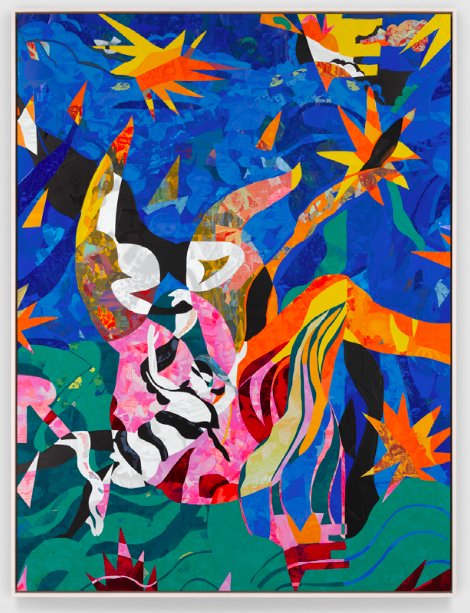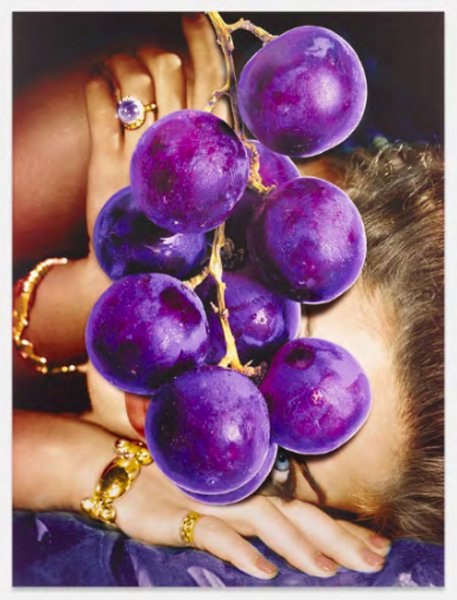Artists To Know
Lee Ufan
Korean, b. 1936
Ufan's artwork is characterized by monochromatic colors that appear as single brief strokes floating amongst expansive canvas space. The gradient of color fades into the canvas. This similar concept can be observed in Ufan's outdoor sculptures, which often include large-scale stone and sheets of metals marking their presence within the vast atmosphere in which they reside. Ufan's work remains true to the concept of minimalism, with little interest in color and instead focusing on how materials transcend. This explains his simple monochromatic palate of white, black, the in-between, and browns.
Agnes Martin
Canadian, 1912- 2004
Martin, was known for her minimalistic approach to art that spoke volumes with quiet elegance. Her works often featured markings of straight lines, delicately traveling either vertically or horizontally across the canvas. The sensibility of scale in her pieces created a subtle and ghost-like contrast that was both intriguing and soothing to behold.
The straight ridgelines in Martin's artworks seemed to preserve their presence on the canvas, yet they possessed a quality that made them almost vanish into the background if one gazed at the painting for an extended period. This delicate balance between presence and disappearance contributed to the overall tranquil and meditative feeling that emanated from her art.
Martin's unique style, characterized by its understated beauty and calm allure, continues to captivate audiences, inviting viewers to immerse themselves in the quiet intricacies of her minimalist creations.
Mickalene Thomas
American, b. 1971
Thomas is an accomplished artist who graduated from Pratt Institute with her undergrad and a Master of Fine Arts at Yale University. Her artworks have exhibited in museums worldwide.
Thomas' unique artistic style is characterized by her exquisite paintings of Black women depicted in graceful and serene postures. These figures are often adorned with vibrant patterns, rhinestones, and glitter, set against interior backdrops that evoke the essence of the 1970s era.
Through her art, Thomas encapsulates a sense of elegance and relaxation, offering viewers a glimpse into a world that celebrates beauty and cultural richness. Her work serves as a poignant reminder of the power of representation and the beauty found in diversity.
Helen Frankenthaler
American, 1928- 2011
Frankenthaler is a legendary artist whose abstract expressionist paintings were created using a range of materials from wax to plaster. She interacted with her materials physically, allowing the images to come forth. The resulting compositions capture the process of their making, as spacious color fields sit beneath the set gestures of Frankenthaler’s uninhibited actions. Her works are a testament to her skill and technique, and she is widely regarded as one of the most prolific female artists from the abstract expressionist movement.
Ed Clark
American, 1926- 2019
Was an African-American artist who created large abstract expressionist paintings using unconventional brush strokes with a sweeper broom. The paintings feature horizontal areas of color that fade or transition into other colors, creating a harmonious effect.
Clark was an essential figure in the abstract expressionist movement, and his works continue to inspire and captivate the viewer.
Louise Bourgeois
French, 1911- 2010
Bourgeois was particularly known for her large-scale sculptures of spiders and her red watercolor paintings, which explored subjects such as motherhood, the human body, and emotions. Her works are highly regarded for their ability to capture the essence of these topics in a profound and moving way.
In addition to her sculptures and paintings, Bourgeois had a diverse artistic practice that included various mediums, such as fibers and printmaking. She is widely regarded as one of the most important female artists of the 20th century.
Alberto Burri
Italian, 1915- 1995
Burri contributed to Italy's Arte Povera (translate: poor art) period between 1967- the 1980s. The movement began with artists taking a revolutionary stance and disrupting expected norms. Artists refused to source conventional materials, encouraging them to employ unconventional materials and found objects to create artworks. Often times the artworks resulted in more structural or fragmentally composed. Burri used burlap, Celotex, plastic Polyvinyl acetate, and wood.
While Burri attended medical school was drafted to WWII. He served in the frontline and later as a physician for the wounded.
Some of his artworks appear to be what lays beneath the flesh, seeming as open wounds or severe trauma to the body. His works later in his career appeared to be monochromatic, either all black or white, in a more tranquil and peaceful matter. The body of the artwork reveals the journey of someone who dealt with physical trauma through an artistic form.
Lucio Fontana
Argentina- Italian, 1899-1968
Fountana painted solid bold colors filled the canvas; the composition contained markings fulfilled by slashes. They penetrate through the canvas revealing the void between the back of the canvas and the wall. The expressions seem carefully calculated as we see how centered and straight, vertically and parallel—seducing the eye towards the void. The slim hallows become the curiosity of the painting. One might imagine the sharp object that caused them or the movement of the firm hand which did. Light exhibits the contrast in lack of medium that exists in the lacerations. The negative space becomes what adds to these paintings.
William Kentridge
South African, b. 1955
Kentridge's works on paper appear effortless, with spontaneous movement and organic gestures of thick ink brush strokes traveling freely on handmade paper. In some instances, newsprint is the backdrop, and sometimes tears of paper have been rearranged to composite the final image.
However, the extent of his diverse mediums ranges from sculptures, film, screenplays, and stage performances, including stage design and direction of operas. The caliber of brilliance encompasses tremendous knowledge ranging from methodology to historical events.
The body of works is typically extensive and taps into multidisciplinary mediums enough to satisfy the artist's curiosity and exploration of subjects. Kentridge's creative process can be experienced through the lens of short silent films where he is the protagonist. Intuitive creation, improv —the birth of art in motion, subconsciously an on-stage act.
His great interest in theater rumble from flat mediums, and his love and humble support for performance reflect his theater patronage, The Lesser Great Idea.
Mark Bradford
American, b. 1961
Bradford is a world-renowned artist whose works are highly coveted. He is represented by the most exclusive galleries and can be found in prestigious art institutions worldwide.
Bradford's works are created by collaging advertisement signs from his native Los Angeles. These signs are torn and adhered to the canvas, then painted over, exposing some text and areas- forming a cohesive dialogue that maps a new narrative. The resulting artworks transform what once were street ads into something beautiful, filled with hope.
Ed Templeton
American , b.1972
Templeton is well know within the skate community and the realm of punk rock photography. His distinctive style often involves capturing moments in black and white, a choice that highlights the raw essence of his subjects while eliminating any distractions brought on by color. Templeton's deliberate use of monochrome allows viewers to immerse themselves fully in the content of his photographs, emphasizing the stories encapsulated within his work.
more artists to know coming soon…

















































































